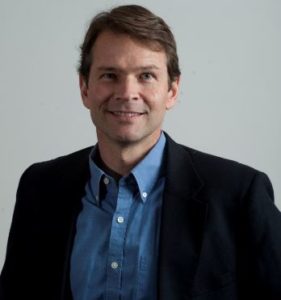A Call to Arms: Geoscientists and Global Health

Gabriel Filippelli, GeoHealth Editor In Chief
April 7, 2018 marked the 70th anniversary of World Health Day, and the first week of April was Public Health week in the U.S., which I celebrated with by releasing a report on the impacts of climate change on the present and future health of Hoosiers (i.e., people from the U.S. State of Indiana). From the global to the local, April was a good time to think about health in a range of contexts.
Obviously, health is important to all of us. Yet, many geoscientists think of themselves simply as consumers of health services failing to comprehend the power that their expertise can play in advancing global scientific and health research outcomes. I would like to take a moment to outline what I see as the vision forward to bridging the gap between the geosciences and global public health, which is embodied in AGU’s growing commitment to GeoHealth as both a section and as a journal.
First, health practitioners know that an individual’s personal health is controlled by two factors, and two factors only: genes, and environment. Although we might be close to tinkering with the gene part of this equation, at present we are stuck with that DNA mix that our parents passed on from their parents, and theirs, and so on. The environment includes some factors that are largely outside the sphere of the geosciences (accidents, violence, etc.), but many of these processes are clearly in our wheelhouse. Geoscientists are experts in measuring, modeling, and predicting the quantity of quality of water, pollutants in soils, variables that control air quality, processes driving ground-level ozone, and the biogeochemistry of various earth materials that we interact with on a daily basis.
Up to now, health practitioners and geoscientists alike have largely left the academic chasm between genes and the environment unbridged. This is not to say that many people have successfully been doing research on and publishing within this space (myself included). But it has been devoid of a real academic discipline, adequate funding resources, and a proper venue solely dedicated to disseminating these research results to a broader community. That is, until now.
In 2017, AGU launched its newest journal, GeoHealth, to fill this gap by soliciting and publishing research on areas where profound environmental processes intersect with human health. This intersection has been d crystal clear at times ― such as recent papers on extreme heat and hospitalizations ― and at other time less defined ― like work to understand how climate change impacts coastal cyanotoxin production which may bioaccumulate in shellfish and degrade fisheries resources. Already GeoHealth, the first new AGU section in 15 years, has already attracted an enormous number of new session proposals for the AGU fall meeting in Washington, DC.
This is just the beginning of a much greater effort to articulate and cultivate relationships linking the geosciences to the health and future of people around the globe. GeoHealth should now permeate into our academic programs, our research collaborations, and our funding agencies. In my opinion, it will first require geoscientists to wade into the aforementioned gap by fighting for dedicated funding sources, learning about and sharing those health science research principles that are crucial for engaging in human related research ― including biostatistics, epidemiology, and human protections ― and thinking creatively about where this field sits within current academic, and institutional structures. In so doing, we will begin influencing more and more of our potential partners on the “gene” side of the environment-gene equation. With problems so vast, and the future so uncertain, now is the time to think and act creatively and to rise to the challenge of making our global environment and society more healthy.





Consider mental health as part of the human problem. I have read and seen pictures of immense plastic garbage patches in the Pacific Ocean, with present plans for a clean up. Our petroleum extraction is used to manufacture plastics in an insanely wasteful quantity way beyond what is required for reusable basic needs. Consider what an oil spill that would be if the same amount were not have been made into plastic! What shame if people on earth suffered the results of the greed for selling plastics to careless throw away. Making money from plastics manufacture and stock market gains won’t seem like fun anymore as this worsens into surreal and insane experiences with plastic garbage gyres in the oceans and gigantic heaps of plastic garbage on land. This seems to affect human mental health. What is evolving to eat plastic and what will be the results of the activity of such organisms? There are organisms that evolved to eat oil from natural vents, but not vast quantities of plastic from human production. Could new evolving and multiplying species affect human physical health?
This is an excellent new Journal AGU has created. Our planet is in bad shape. As the comment above accurately states. Plastics and plastic gyers are becoming an uncontrollable environmental impact factor, biochemically cycling petroleum products through the environment. I myself also believe that cognitive inhibitions are arising from these plastic pollutants. Alzheimer Disease being the one of the most prolific, less understood impacts we see in cognitive functioning. I am not sure about neurogenic placodes compared to environmental degradation, but human cognitive functioning does seem to been impacted by an anthropogenic factor. SV’18